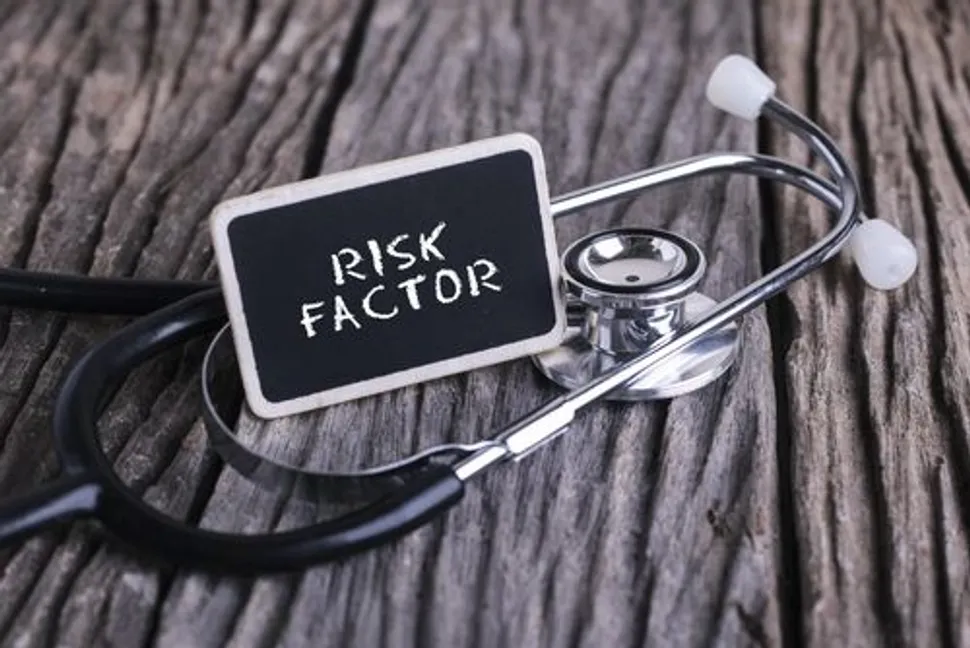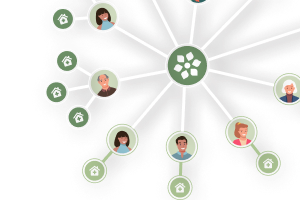What Are the Risk Factors for Non-Hodgkin Lymphoma?

Non-Hodgkin lymphoma (NHL) is caused by a change in the DNA of lymphocytes, a type of white blood cell. This change, or mutation, causes these abnormal white blood cells to multiply rapidly. The precise reason why this occurs is not fully understood. Several risk factors have been identified that may increase your likelihood of developing NHL.
However, not everyone with one or more of these risk factors will develop NHL, and some people may develop a lymphoma without having any known risk factors.
What Are the Personal Risk Factors for Non-Hodgkin Lymphoma?
Several personal risk factors can increase the chances of developing NHL. These risk factors include:
- Age – Patients who develop NHL tend to be older, with an average age at diagnosis of 67 years.
- Sex – In general, males have a greater likelihood of developing NHL than females, although some subtypes may be slightly more common in females, such as follicular lymphoma.
- Ethnicity – White and non-Hispanic people have the highest risk of NHL, while it is generally less common in Asian/Pacific Islander, American Indian, and Black populations, although this can differ by subtype.
- Family history – NHL is not hereditary or infectious, but people with a parent or sibling who has had lymphoma may be at a higher risk themselves.
- Autoimmune disease – certain autoimmune diseases such as Sjogren’s syndrome, systemic lupus erythematosus, celiac disease, and scleroderma have been associated with developing NHL.
- Congenital immunodeficiency – Wiskott-Aldrich syndrome and severe combined immunodeficiency disease can increase the likelihood of developing NHS.
Are There Any Environmental or Lifestyle Risk Factors for Non-Hodgkin Lymphoma?
In addition to personal risk factors, exposure to certain agents and certain lifestyle factors have been linked to NHL, such as:
- Immunosuppressive therapies – exposure to immunosuppressive therapies, such as after an organ transplant, may increase the risk of NHL.
- Radiation therapy – radiation therapy for other cancers has been linked to NHL.
- Chemical exposure – drugs such as phenytoin, digoxin, TNF antagonists, and chemotherapy agents may be associated with NHL, along with exposure to organic chemicals, pesticides, phenoxy-herbicides, wood preservatives, dust, hair dye, and solvents.
- Obesity – obesity has not been found to be a significant risk factor for all NHL subtypes but may be linked to peripheral T-cell lymphoma and diffuse large B-cell lymphoma.
- Tobacco smoking – cigarette smoking is a risk factor for some types of diffuse large B-cell lymphoma (DLBCL).
- Vitamin D deficiency – Increased exposure to the sun is associated with a decreased risk of follicular lymphoma, diffuse large B-cell lymphoma, chronic lymphocytic leukemia/small lymphocytic lymphoma (CLL/SLL), and anaplastic large-cell lymphoma.
Can Infections Cause Lymphoma?
Several types of infections have been associated with the development of NHL; these include:
- Human immunodeficiency virus (HIV)
- Epstein-Barr virus
- Human T-cell lymphotropic virus
- Human herpes virus
- Hepatitis C
- Helicobacter pylori
Can Stress Cause Lymphoma?
While stress has been linked to other health issues, a direct link between stress and lymphoma has not been established. For people who do have lymphoma, stress can cause the cancer to worsen. Practicing mindfulness can help to alleviate stress when it does arise.
Key takeaways
- Older age, being male, and being White may increase your risk of NHL.
- Disorders and infections that affect your immune system are risk factors for NHL.
- Exposure to certain chemicals and agents, as well as lifestyle factors, can be risk factors for NHL.
Sources:
Non-Hodgkin lymphoma (NHL) is caused by a change in the DNA of lymphocytes, a type of white blood cell. This change, or mutation, causes these abnormal white blood cells to multiply rapidly. The precise reason why this occurs is not fully understood. Several risk factors have been identified that may increase your likelihood of developing NHL.
However, not everyone with one or more of these risk factors will develop NHL, and some people may develop a lymphoma without having any known risk factors.
What Are the Personal Risk Factors for Non-Hodgkin Lymphoma?
Several personal risk factors can increase the chances of developing NHL. These risk factors include:
- Age – Patients who develop NHL tend to be older, with an average age at diagnosis of 67 years.
- Sex – In general, males have a greater likelihood of developing NHL than females, although some subtypes may be slightly more common in females, such as follicular lymphoma.
- Ethnicity – White and non-Hispanic people have the highest risk of NHL, while it is generally less common in Asian/Pacific Islander, American Indian, and Black populations, although this can differ by subtype.
- Family history – NHL is not hereditary or infectious, but people with a parent or sibling who has had lymphoma may be at a higher risk themselves.
- Autoimmune disease – certain autoimmune diseases such as Sjogren’s syndrome, systemic lupus erythematosus, celiac disease, and scleroderma have been associated with developing NHL.
- Congenital immunodeficiency – Wiskott-Aldrich syndrome and severe combined immunodeficiency disease can increase the likelihood of developing NHS.
Are There Any Environmental or Lifestyle Risk Factors for Non-Hodgkin Lymphoma?
In addition to personal risk factors, exposure to certain agents and certain lifestyle factors have been linked to NHL, such as:
- Immunosuppressive therapies – exposure to immunosuppressive therapies, such as after an organ transplant, may increase the risk of NHL.
- Radiation therapy – radiation therapy for other cancers has been linked to NHL.
- Chemical exposure – drugs such as phenytoin, digoxin, TNF antagonists, and chemotherapy agents may be associated with NHL, along with exposure to organic chemicals, pesticides, phenoxy-herbicides, wood preservatives, dust, hair dye, and solvents.
- Obesity – obesity has not been found to be a significant risk factor for all NHL subtypes but may be linked to peripheral T-cell lymphoma and diffuse large B-cell lymphoma.
- Tobacco smoking – cigarette smoking is a risk factor for some types of diffuse large B-cell lymphoma (DLBCL).
- Vitamin D deficiency – Increased exposure to the sun is associated with a decreased risk of follicular lymphoma, diffuse large B-cell lymphoma, chronic lymphocytic leukemia/small lymphocytic lymphoma (CLL/SLL), and anaplastic large-cell lymphoma.
Can Infections Cause Lymphoma?
Several types of infections have been associated with the development of NHL; these include:
- Human immunodeficiency virus (HIV)
- Epstein-Barr virus
- Human T-cell lymphotropic virus
- Human herpes virus
- Hepatitis C
- Helicobacter pylori
Can Stress Cause Lymphoma?
While stress has been linked to other health issues, a direct link between stress and lymphoma has not been established. For people who do have lymphoma, stress can cause the cancer to worsen. Practicing mindfulness can help to alleviate stress when it does arise.
Key takeaways
- Older age, being male, and being White may increase your risk of NHL.
- Disorders and infections that affect your immune system are risk factors for NHL.
- Exposure to certain chemicals and agents, as well as lifestyle factors, can be risk factors for NHL.
Sources:

about the author
Dylan Barrett
Dylan is a freelance medical writer based in Cork, Ireland. He previously worked in independent medical education while living in London and is now collaborating with HealthTree to develop resources for blood cancer patients. His background is in genetics, and he has a passion for innovative scientific research. In his spare time, he enjoys sports, traveling, and spending time with his family and friends.
Get the Latest Extranodal Natural Killer Updates, Delivered to You.
By subscribing to the HealthTree newsletter, you'll receive the latest research, treatment updates, and expert insights to help you navigate your health.




